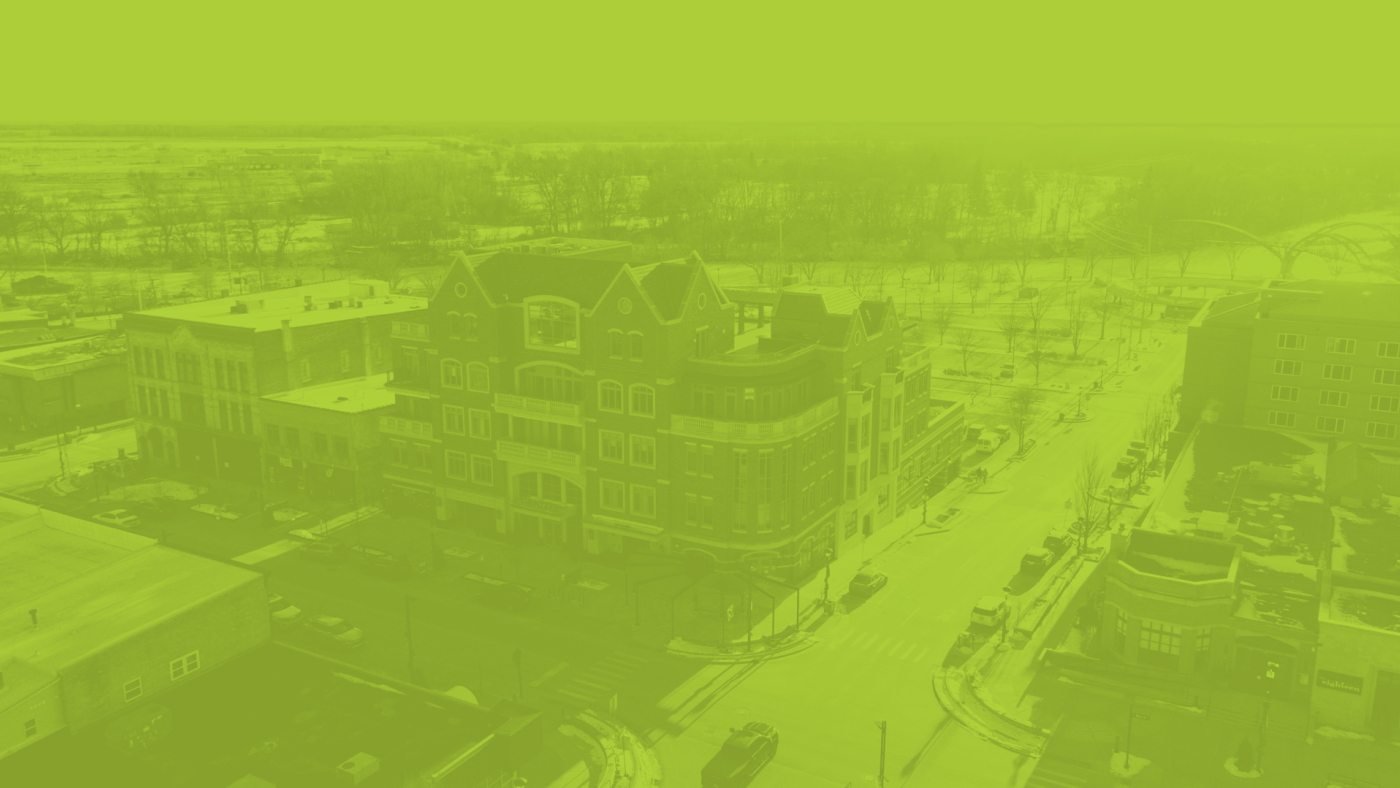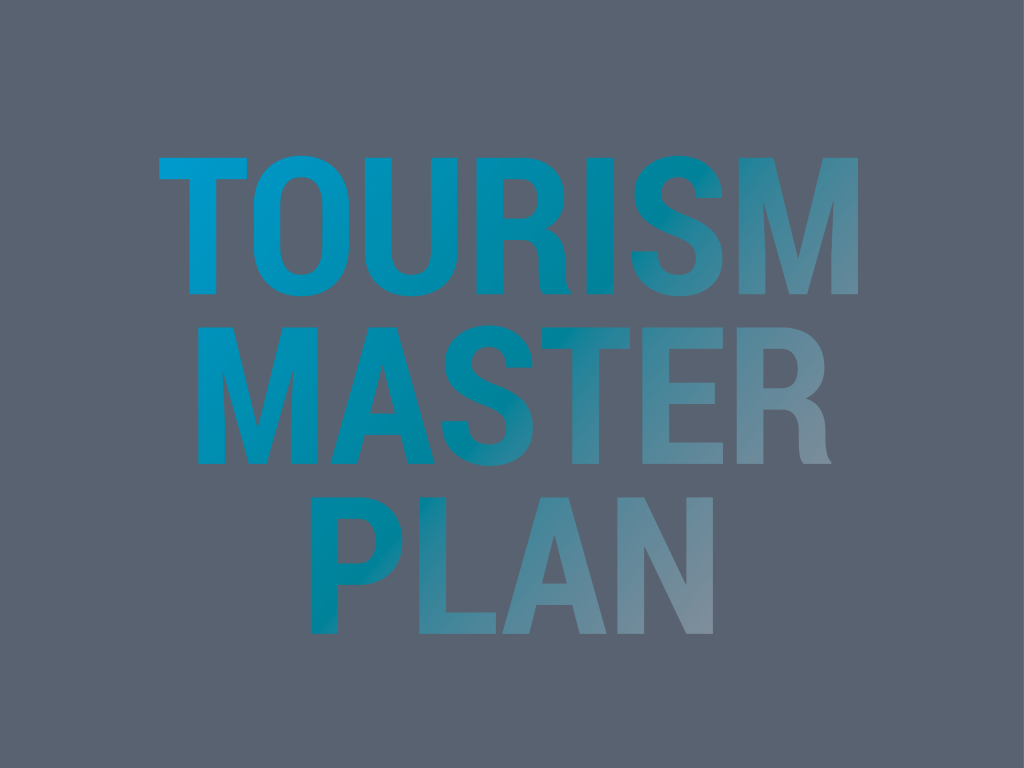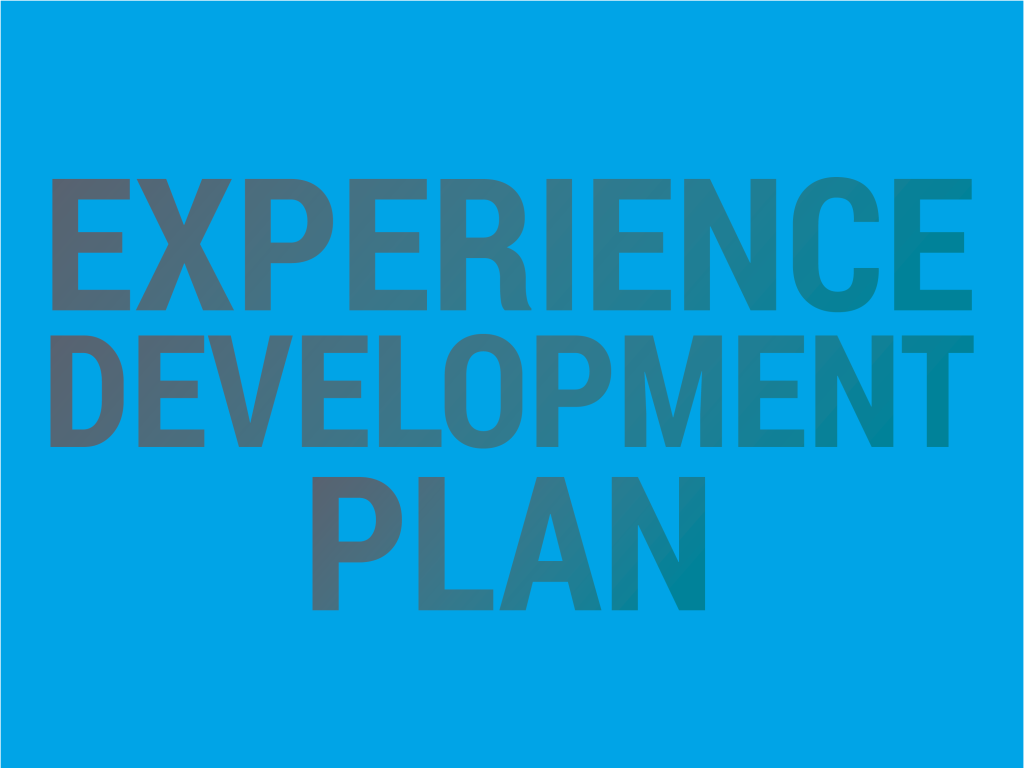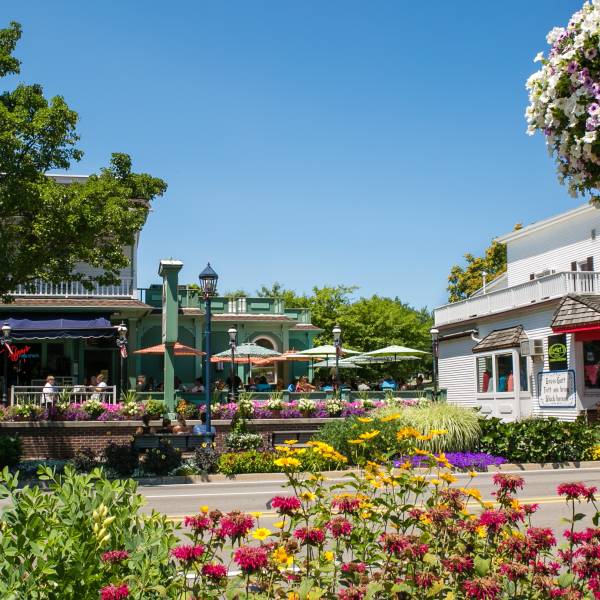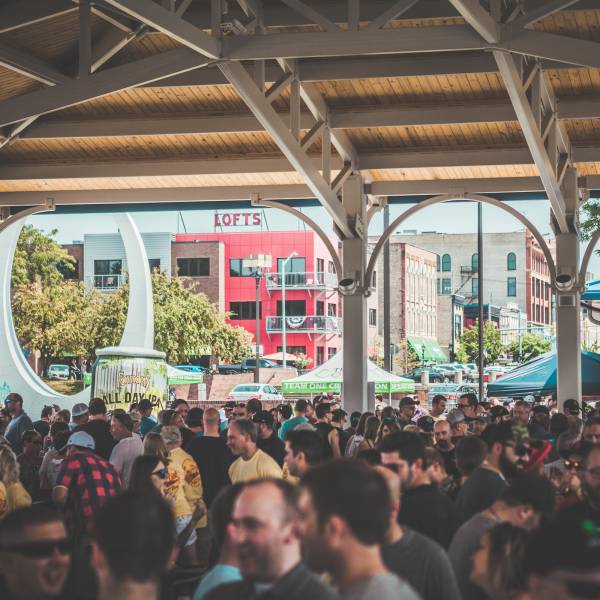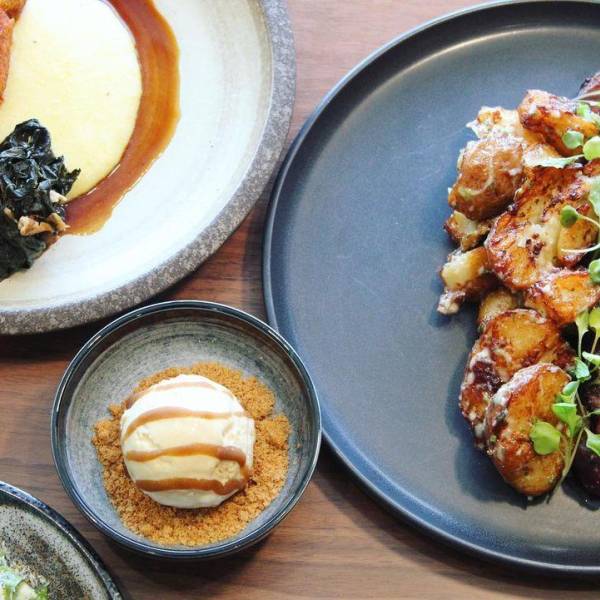INTRODUCTION + OVERVIEW
Michigan’s Great Lakes Bay Region (MGLBR) is comprised of three counties in the state’s lower peninsula (Bay, Midland, and Saginaw), and is situated west of the Saginaw Bay of Lake Huron. The north-flowing Saginaw River flows into the bay, bisecting the three-county region which includes the three cities which serve as county seats for the three counties (Saginaw, Bay City, and Midland) and several smaller communities, including Frankenmuth, Birch Run, and Chesaning. The Great Lakes Bay Regional Convention and Visitors Bureau (GLBRCVB) was formed more than a decade ago as the Destination Marketing and Management Organization (DMMO) to unite the region as a single destination and to encourage regional collaboration in the pursuit of economic growth. As the DMMO of the region, MGLBR has promoted the three counties as a single destination and provided travel sector leadership for hundreds of partners in the area.
Like every other destination in the world, MGLBR was hard hit by the COVID-19 pandemic, and recovery has been sluggish in part because of the slow return of business travel. The region also suffered a devastating 100-year flood in May 2020 as two dams on the Tittabawassee River in Midland County failed during an epic storm. The dams’ failures flooded the city of Midland and drained two lakes that were important recreational assets for the destination. More than two years later, repairs have yet to be completed on the dams and the lakes have not refilled. The devastating impact of the pandemic and the flood have been a double whammy to a region that had already been seeing population loss and great personal economic anxiety. Economic uncertainty and inflation during 2022 have further exacerbated the slow economic recovery of MGLBR.
SMARInsights and Magellan Strategy Group were engaged by MGLBR to develop a Recovery Communications Strategy that outlines how messaging adjusts from now through an eventual travel rebound. This process requires identifying new markets and audiences and developing appropriate messaging and communication channels to tell the stories of the region, attract new and repeat visitors, and increase economic impact from tourism. While much of the Recovery Communications Strategy is focused upon short-term actions to generate more immediate benefit to the community, the plan also includes opportunities to build a more resilient tourism economy for the region via audience diversification to avoid dependence upon markets or audience segments.
The Recovery Communications Strategy was formed by three major market research initiatives:
- Consumer potential and segmentation study
- Resident sentiment survey
- Regional stakeholder survey
These three quantitative studies were performed in the spring of 2022 and yielded valuable insights for the Recovery Communications Strategy development process. However, all three components of the research have a much longer shelf life for impact of Michigan’s Great Lakes Bay Region’s scope of work well beyond these recommendations. The three market research reports are included in the appendix of this document.
In addition to the insights gained via the above market research, the Recovery Communications Strategy development process included personal interviews and focus groups with regional tourism stakeholders. Three of these focus groups were conducted collaboratively with MMGY NextFactor, another MGLBR consultant, creating a destination development plan for the region and working on a parallel path with the development of the Recovery Communications Strategy.
The end of the beginning.
That’s a theme the consultant team heard expressed in a lot of different ways during the process of discovery for the Recovery Communications Strategy, although not quite in those exact terms. Among visitor economy stakeholders, there’s a recognition that Michigan’s Great Lakes Bay Region is an emerging destination still on the evolutionary scale—not quite fully formed yet, but with a foundation now in place to enable faster future growth. Much like a teenager, the formative events that have thus far occurred in the life of MGLBR, as a regional DMMO, are shaping its adult future—its birth as a startup organization; strong parental guidance through visionary Board of Director Members, CEO leadership and team member dedication; community adoption of the regional brand; and creative marketing anchored by a partnership with Pure Michigan. And in keeping with the concept of the teenager stage of life, there have been some rough times, too. The global COVID-19 pandemic robbed the destination of some of its momentum, created uncertainty about the recovery of the visitor economy, and MGLBR, like many others around the world, was forced to lay off personnel.
And like many places post-pandemic, MGLBR has changed as a destination. Additionally, the May 2020 flood robbed the region of two popular lakes, and the timing of their return remains uncertain. So have consumer preferences and needs, although how permanent many of those marketplace changes are remains to be seen. Some trends are likely fleeting and came and went in the same way that lockdowns and masks did. Other traveler behaviors are going to be longer-lasting or are more recent reactions to an inflationary market environment or continued challenges with staffing and supply chain challenges. The following assessments are based on the aforementioned traveler, stakeholder, and resident research, and represent the world as of the first half of 2022.
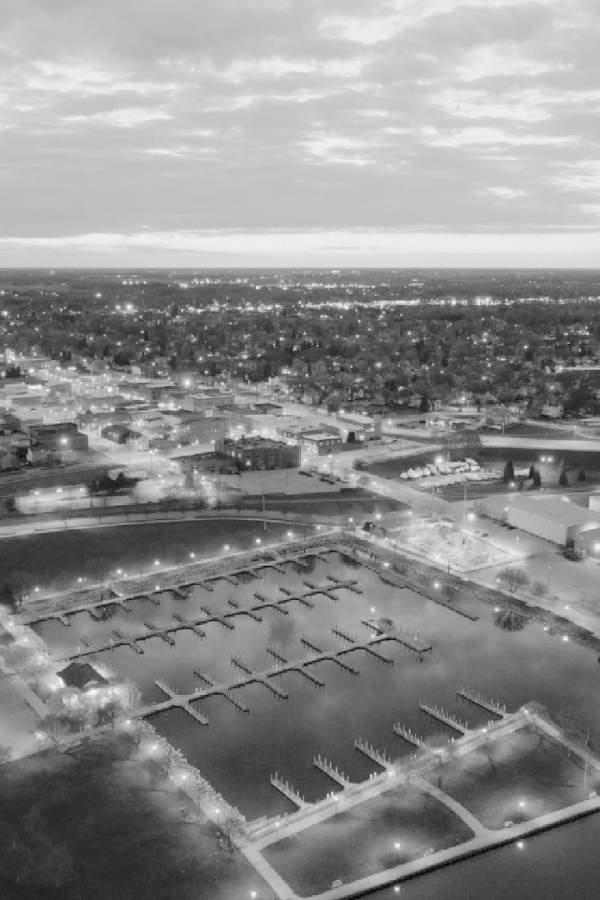
AN ABUNDANCE OF ASSETS, BUT A LACK OF THEMATIC CONNECTIVITY
There’s not a lot of thematic connectivity among the three counties of Michigan’s Great Lakes Bay Region that ties them together. Proximity to Lake Huron, the Saginaw Bay, and the four recreational rivers and trails provide the most obvious form of connectivity (and the raison d’être for the name of the regional destination), but even that is somewhat problematic. There’s only a single point of direct engagement with Lake Huron and Saginaw Bay available for visitors, at the Bay City State Park. Although, once Michigan’s primary beach and entertainment area, the Bay City State Park now ranks low in visitation. Other than the geographic proximity to the lake, however (which is not insignificant), the three counties don’t have a great deal of conspicuous association with each other and have yet to maximize the rivers and trails systems that do serve as their link.
MGLBR does have an abundance of destination assets. One of the advantages of marketing a three-county region as a single destination is that it triples the number of potential assets for promotion. The most remarkable quality about these assets is their variety. There is no sameness to them—every community and county is unique in what they offer. While other regional destinations may be known for their high mountains, miles of beaches, hundreds of hiking trails, or dozens of golf courses, MGLBR doesn’t have a lot of any one thing, but it does have an abundance of singularly unique assets.
These same diverse assets are also easily perceived as disjointed. Without any obvious thematic connectivity other than the regional identity, there’s no overwhelming pull for potential visitors that comes with that kind of abundance. The destination marketing challenge is at least partially defined in this way—do you try to find the audience that, for example, loves fishing AND Frankenmuth and wants to do both while visiting? Or do you identify the audiences for each of the top motivators of visitation to the region and sell them on that particular asset, even though there may be no overlap amongst them? The first approach is highly efficient, but the audience may be relatively small. The second approach has a larger audience but will require more investment.
THE NEED FOR STORYTELLING
Storytelling is missing. One of the reasons the destination’s assets feel disjointed is that there’s often no context in terms of how they are promoted by MGLBR, especially via social media. There’s no connection to a larger story, no apparent strategy behind a post, or a thread that shows how the asset is relevant to the larger region’s story. An attractive photo by itself is appealing—but is also no different than a million other images shown in other destinations’ social media feeds.
MGLBR’s video content needs strategic direction. Video content is such a critical component for brand building and storytelling, and especially so for a large and diverse regional destination like MGLBR. But the video content posted by MGLBR has few views and, consistent with the observation above, feels disjointed and not connected to a larger theme or regional story. Additionally, the video channel includes both consumer and local industry content, adding to the feeling of being disjointed. The small number of views is likely due to a lack of integration of video within other content.
OVERCOMING IMAGE AND PERCEPTION CHALLENGES
There are perceptual barriers to be overcome. The reputation of Saginaw among both travelers and even some regional stakeholders doesn’t necessarily affect the reputation of the entire region, but it is concerning. Saginaw witnessed the sharpest drop of any of the MGLBR’s communities in likelihood to visit between the 2018 market profile study and the one conducted in 2022, during a time when regional drive tourism exploded across the nation. Saginaw had the lowest proportion of actual visitors saying they would be likely to recommend it to friends and family or return for a visit. But the reputation of Saginaw is also a conundrum—while it had the highest percentage of travelers (compared to MGLBR’s other destinations) rating it as “poor” or “fair” in the 2022 survey, it also had the second highest percentage of people rating it as “good” or “excellent.” An association with crime is hurting Saginaw more than any other factor, and a lack of superlatives associated with the community (things the community does particularly well) drags its ratings down.
THE BENEFITS OF AN EMOTIONALLY CONNECTED BRAND
The regional destination brand lacks an emotional connection. The achievement and adoption of MGLBR’s identity by all three counties is remarkable in that so few regional marketing initiatives are ever truly effective because no entity within the region wants to subsume their individual brand for the greater good of the broader identity. But it appears so much energy has been expended to achieve the adoption of that regional identity and establish its location that little energy remained to be invested in the brand resulting in no emotional connection being developed. What does MGLBR mean to travelers and others when they hear the brand? The brand identity is still in need of a deeper exploration to complete its evolution and build a brand that is emotionally relevant and not just known. Like the destination itself, the brand is at the end of the beginning.

THE DECLINE AND UNCERTAIN RETURN OF BUSINESS TRAVEL
Business travel—an important driver of room nights pre-pandemic for part of the region—has not returned to pre-pandemic levels and will likely not return for years to come, if ever. Replacing these visitors and their economic impact is of paramount importance. Stakeholders in the Midland area expressed significant concern about the loss of room nights associated with business travel, especially that which is connected to the Dow Chemical Corporation. Two and a half years after the start of the pandemic, travel to the destination associated with Dow and other businesses is still well below that seen in 2019 and earlier. This lack of a recovery has generated negative ripple impacts for non-lodging businesses and for MBS International Airport, too (MBS is faced with additional challenges as a nationwide airline pilot and staff shortage at most regional air carriers has meant cuts in flights for the airport that are both demand-related and driven by the shifting of staff resources to other markets). Stakeholders in other communities shared similar concerns about business travel, but the need for new demand drivers is most acute in the Midland area.
THE NEED FOR GREATER DESTINATION AWARENESS
MGLBR has low awareness as a leisure destination relative to other Michigan destinations. In the consumer potential and segmentation study performed as a component of this report, familiarity with Frankenmuth was the highest of any of the six communities measured (Bay City, Birch Run, Chesaning, Frankenmuth, Midland, and Saginaw), but still trailed the awareness measured for all but one of the six other Michigan destinations. Awareness of Frankenmuth was relatively high when measured among Michigan residents—higher than any other destination except Detroit—but much lower among respondents outside of the state (awareness of all six communities was relatively low among non-Michigan residents, with no community having familiarity higher than 34%).
Among those travelers familiar with the six communities, levels of past visitation are actually somewhat healthy among Michigan residents, ranging from 79% for Frankenmuth to 25% for Chesaning (which is considerably behind the next community, Midland at 49%). The six communities are highly dependent upon Michigan visitors. However, past visitation still lags behind every other Michigan destination except Holland. Frankenmuth does perform well among Canadian markets, however, with the second highest prior visitation rate among those travelers and only behind Detroit.
What is more concerning is that the intent to visit any of the six communities in the future is generally much lower than the other six Michigan destinations. Frankenmuth (56%) is ahead of only Detroit (53%) and Holland (55%), and all other Michigan’s Great Lakes Bay communities are below those two destinations. That’s not surprising for the non-Michigan markets, but for some of MGLBR communities, the intent to visit is not much higher (and for Saginaw, actually lower) for Michigan residents than it is outside the state. The intent to visit is particularly noteworthy for the three urban communities that are part of MGLBR.
That observation can also be seen in the ratings of each of MGLBR’s destinations and the comp set in the remainder of Michigan. It’s not that any of the six communities have very high levels of poor or even fair ratings. Even Saginaw’s combined rating of poor and fair was just 14%, which, although it was second only to Detroit in the list of 12 communities, is not outlandishly high. The opportunity for MGLBR is that its communities received very few ratings of excellent as leisure destinations among respondents. Respondents were mostly neutral and some (fewer than a quarter, except for Frankenmuth) rated the destinations “good,” but fewer than 10% rated any destination as excellent (again, with the exception of Frankenmuth, which was rated excellent by 23% of respondents).
At 1.9 days, the average length of stay for MGLBR is, not surprisingly, short. That figure is also slightly lower than the average of 2.1 days when market research was last performed in 2018. Average party size is also less than in 2018 (2.8 people versus 3.1 in 2018), and the percentage of visitor parties that included children dropped from 54% to 43%. That’s just slightly higher than the average for all U.S. households (40%), but considerably higher than the average for the state of Michigan (32%). What is somewhat surprising is that the percentage of visitor parties with kids among visitors to Frankenmuth is slightly lower (38%) than the region (40%). However, this may be attributable to the large number of group tours visiting Frankenmuth.
MARKET PERCEPTIONS OF THE DESTINATION
The perception of the quality of visits to Michigan’s Great Lakes Bay Region is very uneven among visitors. Frankenmuth receives very high ratings across all aspects of the visit (except nightlife), and Birch Run has an exceptional rating for shopping due to its abundance of outlet stores. The six communities within MGLBR all perform well in dining, but Saginaw has the lowest scores across the board for all measured aspects of the visit experience (however, it is also easy to overreact to these relatively lower scores—on a 10-point scale, Saginaw received no rating lower than 6.7 for any aspect of the visit experience).Of greater concern is that the image ratings of five of the six communities within the MGLBR (the exception being Frankenmuth) are unremarkable. Very few of the image ratings are poor, and even the ratings that are relatively poor are easily explainable (example: Birch Run has a poor image rating as being good for canoeing or kayaking and having a good waterfront but given its location, that is understandable. Birch Run also rates poorly as a destination for concerts and nightlife, but as a small community known mostly for shopping, there is no expectation that it should perform better for that specific image).But the mediocre image scores in certain areas are worrisome. MGLBR possesses an abundance of water-related attributes and assets. The brand identity of MGLBR is linked to water. But for water-related activities and images, all the communities within MGLBR had mediocre image ratings among travelers. The same is true of images related to several other attributes that should be strengths of MGLBR, including agriculture, affordability, and delivery on the Pure Michigan brand.
Based upon the market profile research, this report provides recommendations for target audience selection for both the short-term (recovery) and long-term (resiliency). The short-term audience strategy is driven by the need to generate overnight stays to provide more immediate economic impact and replace stays that have been lost due to the pandemic, the 100-year flood, the loss of Sanford and Wixom lakes, and the uncertain global economic environment. The longer-term audience strategy is informed by the necessity for diversification and resiliency to protect the destination from future shocks caused by disruptive events both locally and globally.
SHORT-TERM AUDIENCE FOCUS (NEXT 3-5 YEARS)
Michigan residents — This audience had the highest awareness and prior visitation of the destination among any segment looked at in the market profile research. While they may require new motivations, changes in their destination perception, and reasons to visit or revisit Michigan’s Great Lakes Bay Region, they are by far the “lowest hanging fruit” and most likely to return the highest return on investment. Investment of precious marketing resources in secondary American and Canadian markets during this time is not recommended.
Traverse City and Upper Peninsula travelers — For much of the Detroit market heading north by car, their travels to the popular Traverse City and Upper Peninsula destinations take them right past and through the front door of MGLBR. The region is not Traverse City or the UP (although several stakeholders commented on how they believe MGLBR is at the same place Traverse City was in the destination lifecycle before its popularity surged even prior to the pandemic), and it’s not yet likely that their visitors will substitute a visit to those destinations with one to MGLBR. There is an opportunity to use “other destinations’ money” to benefit MGLBR.
Indeed, the objective should be to encourage those travelers to “sample” MGLBR as a destination on a future weekend stay, using a strategy that combines digital targeting of those travelers during their planning phase with out-of-home advertising along Interstate 75. This audience already has a propensity to travel by car, which is one of the basic audience characteristics of any visitor of MGLBR. MGLBR currently engages in some out-of-home promotion along I-75, but the execution can be expanded and improved by following the messaging strategies presented in this report (for example, an image of the USS Edson doesn’t achieve the same kind of strategic outcomes that other imagery that addresses some of the perceptions of the destination might achieve).
Christmas travelers — Coming out of the pandemic, the next couple of years are likely to see strong demand for Christmas-related travel activities. Many travelers have avoided Christmas holiday celebrations due to COVID; even as outdoor activities and travel have recovered to pre-pandemic levels. MGLBR possesses an abundance of Christmas holiday traditions, and the holiday season provides an opportunity to generate shoulder and off-season room night demand.
Weddings — The Wedding Report, a wedding industry research firm, estimates there will be at least 2.5 million weddings in the U.S. this year. This figure represents the highest number of weddings since at least 1984. Much of this wedding boom is obviously due to delayed celebrations because of the pandemic, but there are also some demographic trends pushing the boom, too. Many Millennials (the largest generation in America) are finally getting married, and the country is also seeing the first wave of Gen Z marriages this year. The average wedding cost $28,000 (exclusive of the ring) in 2021—a significant investment by those getting married, but also a significant economic impact for many local businesses where weddings take place. MGLBR may never be a major hub for destination weddings, but MGLBR needs to at least compete for some of this market by adding a section for weddings, venues and local partners to the website, developing a wedding planner guide PDF, and occasionally featuring local wedding venues on its social media platforms.
LONG-TERM AUDIENCE FOCUS (NEXT 3-5 YEARS)
Amateur and youth sports — Interviews with several MGLBR destination stakeholders indicated that the sports tourism market has been quick to rebound from the pandemic. This observation is consistent with the experience of many other destinations across the U.S. Families with children engaged in sports were among the fastest segments to begin traveling again following the spring 2020 lockdown, showing great resiliency in the face of unprecedented challenges. This market is also highly competitive, and the arms race associated with new youth and amateur sports facilities continues unabated. With its easy accessibility, range of affordable lodging options, good facilities, and strong regional collaboration, MGLBR can compete in the sports tourism market, and the Great Lakes Bay Regional Convention & Visitors Bureau team should continue to build relationships and awareness of the destination as a premier sports host.
Family travel — The market profile analysis demonstrated that families are already visiting MGLBR in significant and surprising numbers. MGLBR offers families a number of destination benefits—an easy car ride from Michigan’s population centers, plenty of outdoor recreation opportunities, affordable and family-friendly lodging, a visit to a European village, Christmas holiday activities, and an environment mostly regarded as safe. But for the family market’s potential to be more fully realized requires changing perceptions and destination images first, which is why this is a recommended long-term audience strategy.
Enthusiasts — The market analysis revealed that the image of the destination in certain enthusiast categories (hunting and fishing was one noteworthy example) is not as strongly positive as many regional stakeholders perceived during interviews and focus groups with them. Addressing this perceptual deficiency will require additional work over the next few years, but the potential for attracting these enthusiasts from both Michigan and non-Michigan markets does exist.Other enthusiast categories that have greater market potential for MGLBR include antiquing (a market that the MGLBR already includes in some of its promotional efforts), boaters, birders, cycling, and the arts. Each of these can be leveraged with highly targeted advertising, social media, and public relations tactics.
Canadians — The Canada-to-US travel market has yet to rebound from the pandemic, stymied by COVID-19 restrictions on both sides of the border, economic uncertainty, high gas prices, and fluctuating currency exchange rates. This slow rebound is likely to continue for some time, meaning that the Canadian market is a long-term strategic play for MGLBR. Pre-pandemic, the southwestern Ontario market filled hotel rooms for MGLBR, attracted by shopping, outdoor recreational opportunities, minor league hockey, and special events and concerts. This market is not currently viable but will be again in the future. While the Canadian travel market is more vulnerable to external shocks than most domestic markets, MGLBR still offers an affordable and easy getaway in non-COVID times.
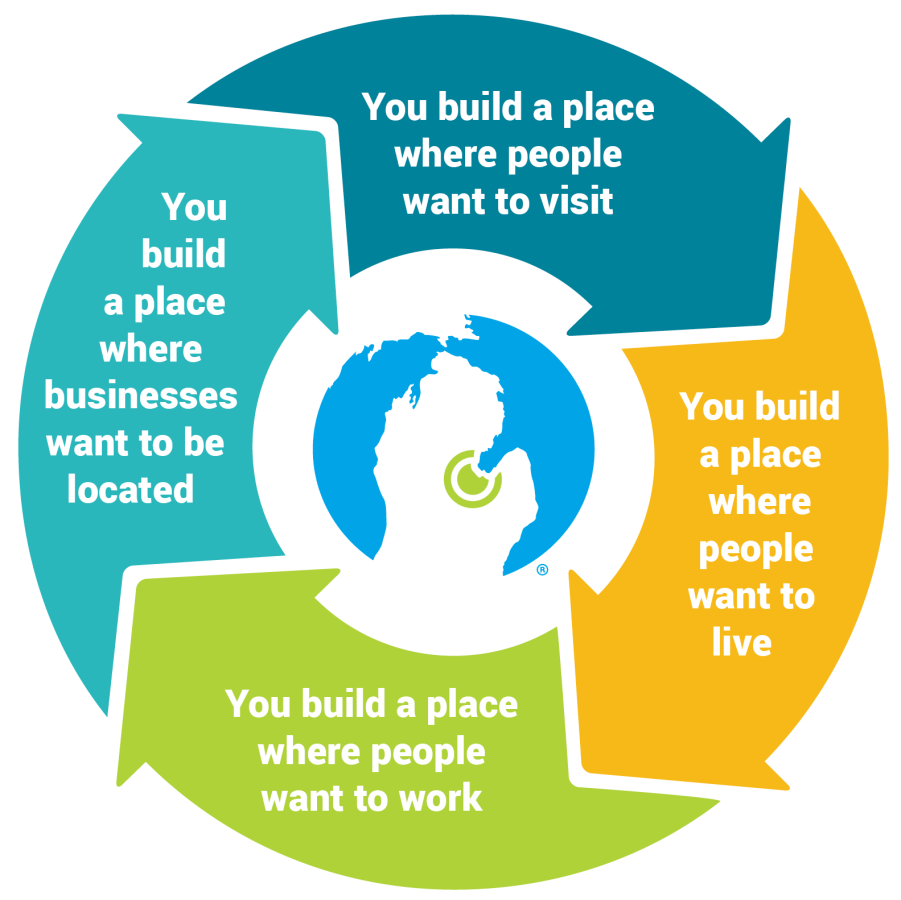
There are six communication strategic imperatives recommended to Michigan’s Great Lakes Bay Region to begin the recovery from the COVID-19 pandemic and the 100-year flood. These imperatives are accompanied by tactical action item recommendations and reflect an intent to generate positive impacts for MGLBR in both the short-term (within the next five years) and long-term.

As noted previously, the achievement of a single unified regional destination brand is no small feat. Given the amount of energy that went into its adoption and consistent use within MGLBR, it’s understandable that MGLBR brand may not yet be fully baked, as the cliché goes. A regional destination brand is the sum of many parts, which is why there needs to be a unified brand vision beyond the verbal identity of the area. The hard part of uniting destination leadership and strategy has been done. But more work is needed to evolve the destination brand into one that has an emotional connection for residents, stakeholders, and visitors alike.
The brand should also strive to be aspirational and even have an element of social currency associated with it—something that travelers would want to show off online as having visited. This additional work on the brand is particularly opportunistic given the recovery communications required coming out of the pandemic and the 100-year flood of two years ago. Consumer needs and preferences have changed, and MGLBR needs to reintroduce itself to the world.
Within the larger strategic recommendation to do a deeper dive on the destination brand are the following strategy recommendations:
Identify the emotional connection desired for Michigan’s Great Lakes Bay Region brand identity and execute a tagline that delivers on that and creates an even greater relationship with Pure Michigan.
The visual and verbal identity associated with a brand are only two components of an informed brand architecture, and they are the sexiest parts of the brand. After all, everyone wants the tee shirt. But in this case, MGLBR would also benefit greatly from a refreshed visual and verbal brand identity that includes a tagline.
One means of using the brand to start building destination awareness for MGLBR outside the state of Michigan would be to incorporate Michigan into the tagline. This would both leverage the positive image and strong awareness of the Pure Michigan brand and help locate the destination for non-Michigan audiences. The name “Great Lakes Bay” has competition for awareness in other Midwestern states. For travelers living in Chicago or Wisconsin, for example, their first image association with a leisure destination when they hear “Great Lakes Bay” might be with Green Bay or Door County. For travelers in Ohio, their association with the brand identity might be Put-in-Bay. A tagline helps further distinguish Great Lakes Bay from other destinations. Some basic examples of this include “The Heart of Michigan,” “Michigan’s Great Getaway,” “Six Cities, One Michigan Adventure,” “Michigan. Simply.” and “Michigan is Our Nature.”
The current visual brand identity showing the location of MGLBR within the state of Michigan aids travelers and prospective visitors in locating the destination. But even a slight alteration of changing the circle-shaped locator in the logo to a heart would signal to prospective visitors the warm hospitality to be found in the “Heart of Michigan.”
Priority: High
Complete By: end of 2023
Develop a destination brand promise for Michigan’s Great Lakes Bay Region that authentically communicates who and what you offer.
The brand promise differentiates MGLBR from other competitive destinations and describes the superior value and benefits offered to visitors. The brand promise communicates to would-be visitors (and residents and stakeholders as well) an assurance that something will be done, and a perception of future excellence and achievement. Although the brand exists in the mind of the consumer, the promise is typically an internal statement that informs all that MGLBR does and communicates in the marketplace and yet is always customer-focused.
Some examples of brand promise statements for MGLBR might include:
- The Michigan destination that’s close to home and easy to love
- Michigan’s Great Lakes Bay Region is Michigan at its simplest and its best
- Michigan’s Great Lakes Bay Region offers surprises and smiles on every visit
- Six different communities and six different surprises
Priority: High
Complete By: end of 2023
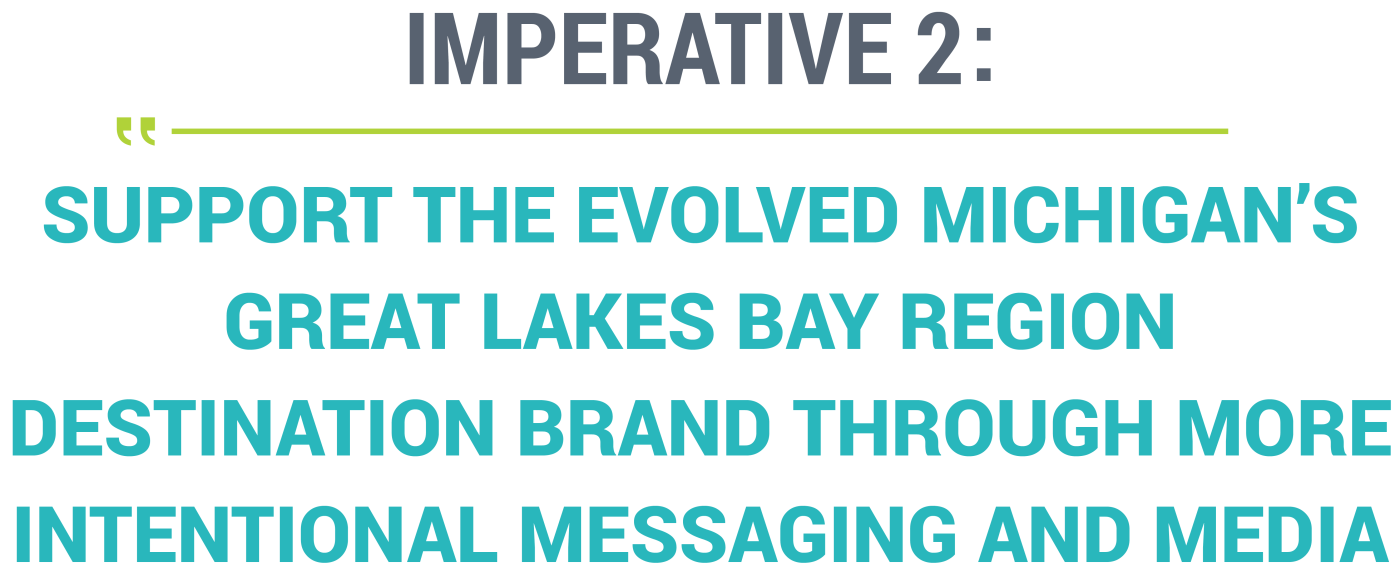
Be intentional about using imagery and messaging to build the brand.
Every image and message in every MGLBR promotional channel should be selected with a supporting brand strategy in mind. Like many DMMOs, there doesn’t appear to be a strategy behind much of the imagery and messaging used by MGLBR across its promotional platforms. The GLBRCVB team does a fabulous job of supporting its partners and providing balanced exposure for all parts of the region. It’s not necessary to lose that partner support and balanced approach to promoting all six communities, but there needs to be more of an overarching strategy to building the destination brand by using image and messaging resources more deliberately. For example, if water (and the emotional connections that travelers have to water-related experiences) is to be the centerpiece of MGLBR’s brand, a Bay City restaurant featured in the MGLBR’s social media feeds might be promoted as being only two blocks from the city’s vibrant riverfront. The GLBRCVB team should also ensure the locations of its images (particularly those of scenic places in the region) are clearly identified so that visitors can easily locate it.
Priority: High
Complete By: end of 2023
Use purposeful imagery and messaging to overcome perceptual barriers.
If one of the perceptions of Saginaw is that it’s unsafe (fair or unfair), be consistent and deliberate in using imagery and messaging that combats that image, such as featuring artwork at the Marshall Fredericks Sculpture Museum or the scenic natural assets of the Shiawassee National Wildlife Refuge. To boost the image of Saginaw as a family-friendly destination, be consistent with the use of imagery and messaging promoting the Children’s Zoo and the Mid-Michigan Children’s Museum. MGLBR already promotes these assets, but the strategy underlying this promotion should always be tied to a larger strategic goal for the region (and that community) and not just informing the visitor about things to do in the area.
Priority: High
Complete By: end of 2023
Rethink Michigan’s Great Lakes Bay Region’s water-related imagery and messaging.
Despite the abundance of water-related assets in the three-county region and the number of stakeholders who cited water as the region’s top asset, the market profile research demonstrates that travelers have a relatively poor association with MGLBR’s water-related activities and assets. The connection to water among regional travelers simply isn’t getting through. Ample opportunities exist to enhance both audience awareness of the area’s water-related assets and to show people actively enjoying them in a variety of different ways (in general, the GLBRCVB team should incorporate more people into its imagery as a means of enhancing the aspirational appeal of the destination and rely less upon static images).
Priority: High
Complete By: end of 2023
Inject “health and wellness” into the brand.
During the pandemic, every brand of goods and service became a health and wellness brand—intentionally or not. A brand didn’t have to be found at a drugstore to be evaluated by a consumer on whether it brought happiness, joy, relaxation, or mental well-being. How do you associate a destination brand with health and wellness? For example, Las Vegas wouldn’t initially appear to be a brand associated with health and wellness. The destination is all about doing everything in excess. Yet Las Vegas is very much a brand aligned with escapism from the day to day and leaving your problems back home. For other destinations, the connection is much clearer--a destination might offer peace and quiet, rest and relaxation, time spent with loved ones, or exhilaration. They are all benefits that travelers seek in return for their investment of time and money. The connection between travel experiences and “health and wellness” has never been so well defined as it has been during the last two-plus years, even if they don’t always involve a world-class spa.
MGLBR can do more to associate itself with “health and wellness.” It’s no longer sufficient to provide a portfolio of “things to do ‘’ and expect the consumer to make the connection to a place where remarkable experiences can be had that make their lives better. What benefits does MGLBR offer that contribute to the health and well-being of the traveler?
- Scenic beauty
- Hassle-free
- Simplicity
- Solitude
- Low cost of escape
- Inspiration
- Intimacy
- Joy
- Fun
- Welcoming
- Warmth
- Curiosity
These consumer benefits all manifest themselves within MGLBR in different ways and can be expressed through intentional messaging and imagery to achieve a measurable difference in how travelers perceive the destination.
Priority: Moderate
Complete By: end of 2023
Invest in new photography and video to support the deeper brand and achieve larger strategic goals.
Given its purpose-driven nature, future high-quality photography and video production should support the Recovery Communications Strategies of MGLBR and serve as assets which not only inform, but also change perceptions and motivate.
Priority: Moderate
Complete By: Ongoing

Focus on the markets that drive the most visitation.
There is still ample opportunity in many of the top origin markets from which the Michigan’s Great Lakes Bay Region receives visitors, and even in Michigan it remains relatively untapped. MGLBR can push the peak in visitation in markets like Detroit, Grand Rapids, and Lansing for many years without concern about maxing out its potential there.
Develop an annual destination marketing plan that carefully targets the audience segments with the greatest propensity for visitation to the destination. While MGLBR has used its five-year strategic roadmap as its annual marketing plan, rapidly changing market conditions and continuing uncertainty in the marketplace demand that a formal annual plan be developed to implement the Recovery Communications Strategy. The marketing focus should be upon driving traffic into the funnel, by using the evolved destination brand to hook travelers in targeted close-in geographic markets and then using regional assets to motivate a visit, lengthen the stay, inform traveler itineraries, and create dispersal and cross-selling opportunities.
Priority: High
Complete By: end of 2023 and ongoing
Test a pop-up “visitor center” program in key Michigan markets.
Given the fragmentation of media, sometimes the best way of reaching potential visitors involves the simplest forms of outreach. Several DMMOs have used “pop-up” mobile visitor centers to introduce their destinations to travelers in locations within key markets where they are likely to be found. These pop-ups act as “food trucks for destination information” and can be used as sampling opportunities for local makers, video and image displays, and creative brand showcases. The objective is to take the Travel Experts and their Travel Tip Desks to the audience, rather than waiting for them to come to the destination.
Priority: Low
Complete By: end of 2025
Pursue new approaches for the use of video to better leverage it as a medium.
Video is invaluable for storytelling and capturing the depth and breadth of the destination, particularly one as complex and as geographically large as MGLBR. But the effectiveness of video is currently limited, and most of the videos have a relatively low number of views. The following recommendations represent ways of better using video to enhance awareness and intent to visit.
- Transition from blogs to video assets. Destination blogs can be insightful, but travelers would rather watch videos and see destination stories, hear from local experts, and learn more about area activities and attractions by seeing other people enjoying them. MGLBR doesn’t currently have the luxury of being able to invest in and do both blogs and video well.
- Integrate video more often in social media content. There is little video currently integrated into MGLBR’s social platforms, which may be one of the reasons the number of views is so low. But this is also a missed opportunity to repurpose video content and maximize its use.
- Paid digital media should focus upon short animations or video assets to tell destination stories. This is another opportunity to maximize the use of video and to invite potential visitors to discover the depth and breadth of the destination.
- Some of the video content currently posted to MGLBR’s video channel includes area tourism partners. Partners should be encouraged to share the same content on their own social media platforms.
- Create separate channels for consumer and industry-related content. Consumer video content should be focused upon communicating depth and breadth and motivating visitation, and industry content should inform and unify.
Priority: Moderate
Complete By: end of 2023
Use influencers to help change perceptions of the destination.
Good influencers operating in the realms of social media and traditional media relations can be invaluable in bringing external credibility to a destination and shaping traveler perceptions, especially for audiences that MGLBR might not otherwise be reaching with traditional media or their owned channels. There are well-documented risks to using influencers or even well-established media—too expensive, the ROI wasn’t worth it, expectations weren’t met, shady characters. But there are also many credible influencers and media professionals who can tell many of the destination’s stories and provide a new perspective on a place.
Priority: Moderate
Complete By: end of 2024
Develop and implement a Frankenmuth destination-within-a-destination strategy.
From the insights generated by the market analysis, it is obvious that Frankenmuth possesses an entirely different set of attributes and image and perceptions among travelers. Frankenmuth still belongs under the regional destination umbrella, but the other five communities in the region clearly require different approaches to build their appeal and visitation. Frankenmuth has its own DMMO and is a huge draw in its own right, but is also highly differentiated from the other MGLBR destinations. Given its uniqueness within the regional destination concept, Frankenmuth is almost more of an attraction than a destination. While Frankenmuth is a powerful driver of visitation to the region, however, the evolved regional destination brand and the Recovery Communications Strategy need to build up the other communities to serve a greater strategic purpose.
Priority: Moderate
Complete By: end of 2023
Celebrate each of Michigan’s Great Lakes Bay Regional communities as a strategy of making the region collectively more attractive.
One of the strengths of the region as a destination is that, despite its size (almost 2,000 square miles), it’s relatively easy to get around and driving distances between communities are short. Frankenmuth to Midland, for example, is only a 40-minute drive. Overcoming perceptual biases can be achieved by celebrating the very best of each community under a single brand umbrella. Each destination’s strengths should serve to complement the overall brand, and those strengths can collectively help overcome individual community perception and image challenges. For example, if Saginaw is perceived as being unsafe, grouping it within the same destination region as Frankenmuth (which is perceived as being very safe) begins to create a different image for Saginaw via a halo effect.
To generate awareness of its five National Parks and to clearly identify them as being located in the state, in 2013 Utah’s Office of Tourism commenced its critically acclaimed The Mighty Five brand campaign. In addition to building destination awareness, the campaign was intended to encourage longer lengths of stays in the state and disperse visitors across all five parks. The campaign was very successful (too successful, as it turns out, as visitors overwhelmed some of the parks and their gateway communities) in celebrating each of the parks and communicating their unique attributes using print, television, digital, and out-of-home. Accompanying the campaign were three, five, and seven-day itineraries for visiting the parks. Utah ultimately introduced a campaign to encourage visitors to seek out the spaces between the parks, those lesser known and visited state parks and other recreation areas.
One component for this strategy is to create unique identities for each of the six destinations within the destination. After all the work to put together the regional destination identity and organization, this strategy seems counterintuitive. Why erode the strength of the regional approach by lifting up each of the six communities and giving them their own identity? Because the market analysis shows that, with the exception of Frankenmuth, the image and awareness of each of the communities within MGLBR could use some polishing. This strategy doesn’t suggest in any way that the regional brand be diminished, but that the traveler appeal of each community be strengthened so that there are six strong pillars supporting that brand. It’s not unlike how MEDC/Travel MI Office has historically leveraged Pure Michigan—a very strong, well-defined lead brand that is also used to promote the uniqueness of places like Traverse City and the Upper Peninsula and how they fit within the brand of Pure Michigan.
An example of how this can be successfully accomplished can be found in North Carolina. Haywood County (https://visitncsmokies.com/) is located in North Carolina’s western mountains, bordering the nation’s most visited national park, Great Smoky Mountains National Park, just to the north. The county is just west of Asheville and is bisected by another heavily visited National Park Service unit, the Blue Ridge Parkway. It has an abundance of natural assets, including hiking trails, rivers and lakes, forests, wild elk, and some of the highest mountains in the Appalachians. The county also has five individual and very independent communities, each with its own identity, personality, and politics.
The countywide DMMO—the only one in Haywood County--has its own strong destination brand (which was a finalist for an ESTO Mercury Award), but it was clear more needed to be done to create interest among travelers in visiting its communities, and particularly to motivate travelers to go to some of the less visited communities in the county. The key component was establishing a brand personality for each community that would fit within the county destination brand, but which would also inspire interest in visiting more than one town on an upcoming visit. Mini campaigns were developed for each community that included video and digital assets and an expanded presence on the DMMO website, along with a unique visual identity and a brand personality that reflected each town. The umbrella destination brand remains the central focus of the county’s marketing, but each community is boosted as a unique destination worth spending time in, making the county visit experience feel larger and of greater value.e to the destination.
Priority: Moderate
Complete By: end of 2025
Boost social engagement.
Engagement levels with MGLBR’s social media posts can be lackluster at times, and often doesn’t resonate with either visitors or residents alike. Simple tactics like using social media to ask questions to prompt responses, using local experts in posts and in video, sharing third party and partner content, or using more images that include people in them can inspire more engagement from visitors and residents. Plus, the development and implementation of a destination social media calendar that strategically addresses many of the issues raised in this report and yet is sufficiently flexible to take advantage of new opportunities during the year will be beneficial to tourism growth.
Priority: High
Complete By: end of 2023
Use a storytelling approach to make seemingly disjointed regional assets more compelling.
As noted in the market analysis, MGLBR has many important and interesting destination assets, but they don’t always fit neatly under one thematic umbrella. And given MGLBR’s current approach to promoting them, they are often presented randomly, without additional context. But these assets are still good opportunities for foundational storytelling to add depth and breadth to the destination. The stories need not be long, complex, or of national significance. They should be compelling enough to help inspire a trip to MGLBR, however, or stimulate interest in the community where they are located.
Visit NC’s Project 543 (543 being the distance in miles from Murphy in the southwestern corner of North Carolina to Manteo in the far northeastern corner, and informally considered to be the width of the state) tells the stories of unique places across North Carolina. These places—ranging from natural sites to historic attractions to the sometimes odd and eccentric—often have fascinating stories associated with them, but aren’t necessarily going to be centerpieces of a statewide tourism campaign. Project 543 provided content for VisitNC’s social media channels and showcased some of the state’s communities that might have otherwise been overlooked or forgotten.
Priority: Moderate
Complete By: end of 2025

While DMMO staff wouldn’t seem to be a component of a destination communications recovery strategy, the work they do is vital to the continuing recovery of the destination. Their contributions to this effort are particularly essential given that so much marketing work is done in-house. What follows are strategic recommendations for how the staff’s role in the recovery communications program of work can be leveraged and maximized.
- The GLBRCVB team is highly motivated and loyal, and many of them are still early in their career development and stretched thin as the organization’s staffing and the destination continue to recover from the pandemic. They would benefit from ongoing and targeted professional development, particularly as destination marketing becomes increasingly complex and data driven.
- In addition to programs and conferences offered by industry associations, a professional exchange program can also pay dividends. Once or twice per year, during slower times for business, department heads visit industry leader destinations in their area of expertise to “pick their brains”, including an in-depth presentation of their own marketing strategies.
- The GLBRCVB team needs to gain a visitor perspective on the regional destination and to have deeper and richer relationships with the industry. By immersing themselves in the destination, the staff can see the MGLBR through a visitor lens beyond walk-through tours. This approach allows them to spend time in the destination being a visitor. Pre-pandemic, Explore Asheville offered “Free Spirited Fridays” for its employees during the summer season to encourage them to immerse themselves in the destination and act like a visitor. This initiative promoted family time, but also encouraged employees to be accountable for their time and to share their experiences to expand learning benefits.
- Do more by doing less. The current Go Great Lakes Bay Strategic Roadmap is impressive, and it is also overwhelming. Given the current level of staffing, the tactical steps outlined in the document would be nearly impossible to achieve on an annual basis. Some of the tactics in the most recent Roadmap are not necessarily complicated or involved, but the sheer number of tactics also obscures some of the strategies and intent behind them.
What to Let Go Of…For Now
Nothing in the current Go Great Lakes Bay Strategic Roadmap isn’t worth doing. But given the limits on financial and staff resources and the need to implement the recommended recovery strategies, there are some destination marketing action items in the roadmap that are better left for a future date. These include:
- Niche markets (unless otherwise recommended as a short-term audience strategy)
- The Go Great Lakes Bay Golf Program
- Surprise Campaigns
The motorcoach market should continue to be monitored for its recovery, and investment in the market adjusted and reallocated to other areas as necessary.
Priority: High
Complete By: end of 2023
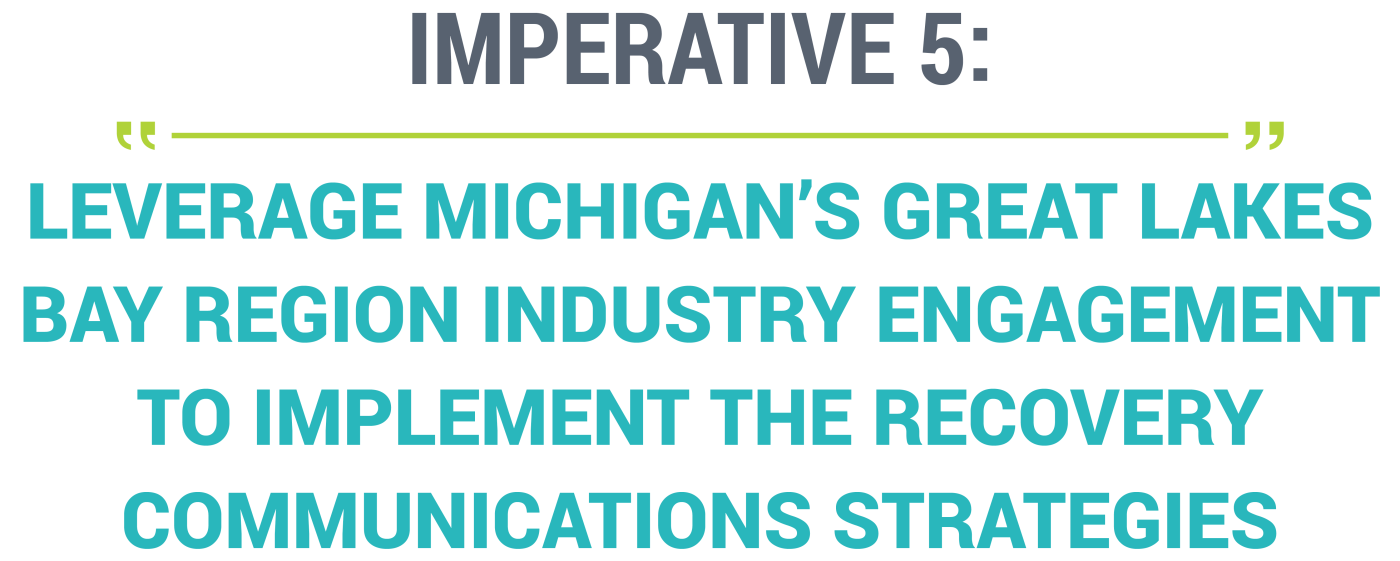
MGLBR can also better use its partners to strengthen the region’s recovery from the flood and the pandemic. Stakeholder interviews during this process revealed that there is tremendous respect for the Great Lakes Bay Regional Convention & Visitors Bureau and its leadership, and one of the strengths cited during these interviews and in the DNEXT assessment is how well the organization works with each local community. Local industry engagement is a strength— how can it be leveraged to further the region’s economic recovery?
One of the hallmarks of a strong destination is having partners who understand why the DMMO does what it does and can support and articulate its strategies to those not directly involved in tourism. The global travel and tourism environment has changed radically during the last 30 months, and many of those changes have impacted MGLBR. The region can lean on a variety of resources for national industry expertise to provide continuous education to the local industry and further bolster its leadership in MGLBR. Given the changes in the marketplace, it is important that partners be brought along the continuum of knowledge so they know what you know and can support the ongoing recovery strategy.
Providing valuable education to the industry is important, but these are also opportunities to bring people together after an extended period without personal contact and use education as the hook to message actions in response to changes and desired strategic outcomes. Doing this more than once a year is acceptable given the current conditions and can be tailored to different audiences (hotel owners and managers, retailers, the arts, etc.). These opportunities include:
- Promoting Symphony as the destination dashboard.
- Using TripAdvisor to manage customer reviews.
- Bringing in an industry expert like Miles Partnership or a MEDC/Travel MI Office partner to provide Google training.
- Inviting local elected leaders to attend to give them recognition and build relationships, inspire advocacy, and develop industry government affairs skills.
MGLBR should also develop a talking points tool kit that reflects the new marketplace reality, including a tourism fact sheet that has been edited for lexicon and made user-friendly for a variety of local audiences.
Priority: High
Complete By: end of 2023

- Encourage resident participation in local attractions to help drive the recovery. The key drivers of strong community ratings and pride in the community are feelings that MGLBR is a good place to raise a family, and that it offers affordable access to a variety of leisure activities. Residents with high local attraction participation give the community higher ratings as a place to live and visit. Communication strategies encouraging residents to be a tourist in your hometown can boost community pride while increasing support for tourism, attendance for local attractions, and spending at tourism-related businesses.
- Leverage local government relationships to boost tourism. MGLBR enjoys strong relationships with local elected leaders and city and county managers. Use these relationships to encourage them to be ambassadors for tourism, and remind them of the “halo effect” of destination promotion and visitation upon all forms of local economic development, including the desirability of MGLBR as a place to attend college, relocate to, retire to, start a new business, or own a second home—all of which are outcomes that local officials understand and have a strong interest in pursuing for a region seeing continued population loss.
- Use National Tourism Week to develop and deliver messages that promote key (yet relatable) tourism statistics and the value of tourism with an invitation to get out and have fun at local attractions and to support local organizations and businesses.
Priority: High
Complete By: end of 2023
METRICS FOR MEASURING THE EFFECTIVENESS OF THE RECOVERY COMMUNICATIONS STRATEGIES
The metrics that will be used to assess the effectiveness of recovery communications strategies for Michigan’s Great Lakes Bay Region include the following measurements which can be regularly collected and reported:
- Traditional lodging market demand metrics: occupancy, average daily rate, and REVPar
- Lodging tax revenue collected across MGLBR
- Visitor center traffic
- Sales leads issued
- Room nights associated with leads
- Sales leads turned definite
- Room nights booked
- Group revenue actualized
- Event delegates
- Website visits
- Estimated public relations impressions
- Video views
- Social media engagements and followers
Other metrics used to assess the effectiveness of the strategies may only be generated sporadically and via financial investment in assessment tools. Some of these metrics include many of the same benchmarks assessed in the three market studies conducted as part of this project. These include:– Intent to visit
- Traveler image and perceptions of the destination
- Visitor satisfaction
- Visit characteristics—length of stay, party size, children present in party
- Resident sentiment
- Return on investment
- Impact upon non-tourism forms of economic development (“halo magic” types of measurements)
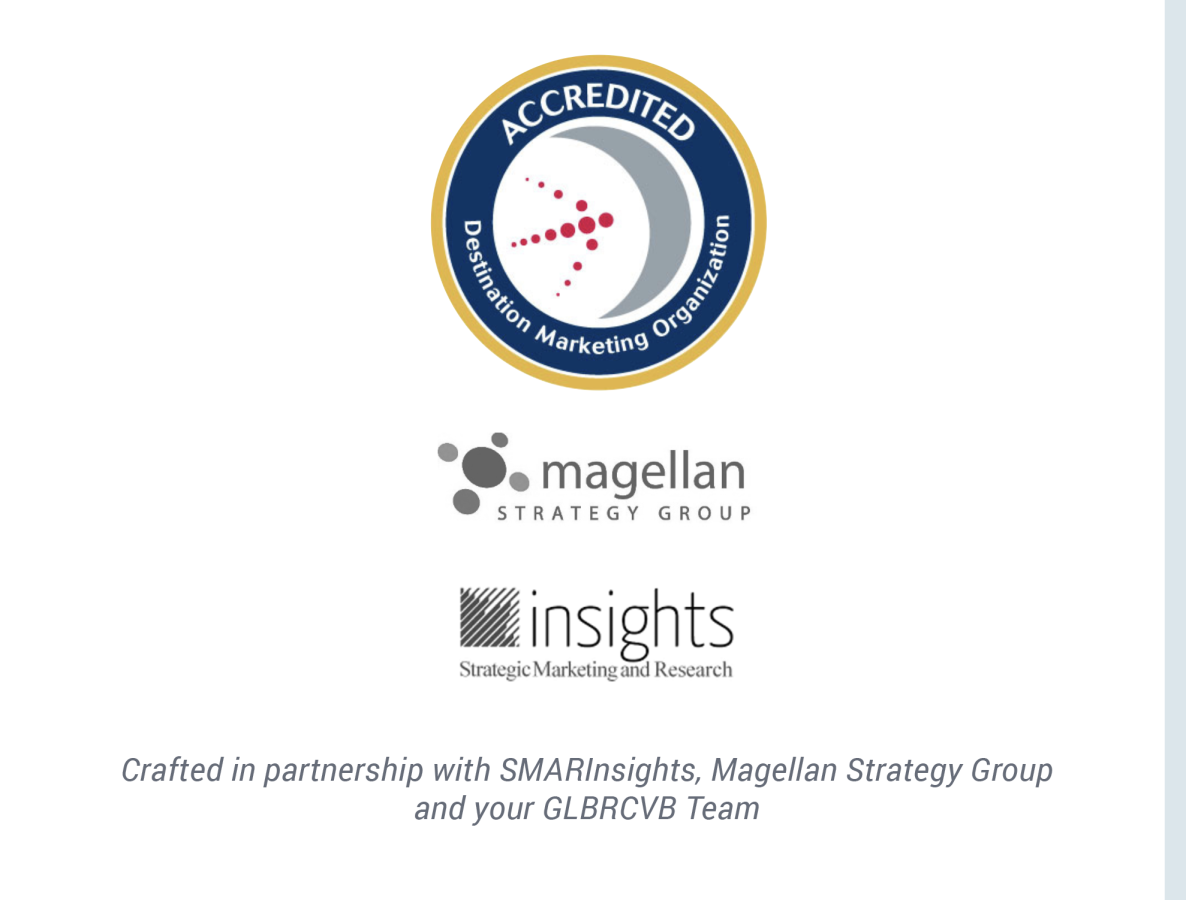
ACKNOWLEDGEMENTS
SMARInsights and Magellan Strategy Group wish to thank the many residents and stakeholders in Michigan’s Great Lakes Bay Region who contributed significant insights and generous feedback for this project via surveys, interviews, and focus groups during the first half of 2022. We especially want to thank the team at the Great Lakes Bay Regional Convention and Visitors Bureau, particularly CEO and Travel Trailblazer Annette Rummel and Director of Operations Ann Bruzewski, whose patience with the consultant team was greatly appreciated throughout the process.
APPENDIX
Consumer Potential and Segmentation Study
Resident Sentiment Survey
Regional Stakeholder Survey

THE FUTURE IS BRIGHT
Strategic Plan
As we plan for a strategic post-pandemic and flood recovery, we know that we can’t do it alone. Feedback from all of you supported the development of this plan. We will undoubtedly emerge and successfully recover as we Go Great, Together.
A Long-Term Investment
Aiming to preserve the quality of life for our residents and ensure quality experiences for visitors, this plan will guide the long-term sustainable planning and design of Michigan’s Great Lakes Bay Region as a tourism destination.
Read More +
The Power To Keep Growing
With a vision of becoming a welcoming and inclusive region that celebrates our four seasons, natural assets, distinct experiences, connectivity, and shared community values, four strategic goals related to Experience Development were identified for the region.
Read More +